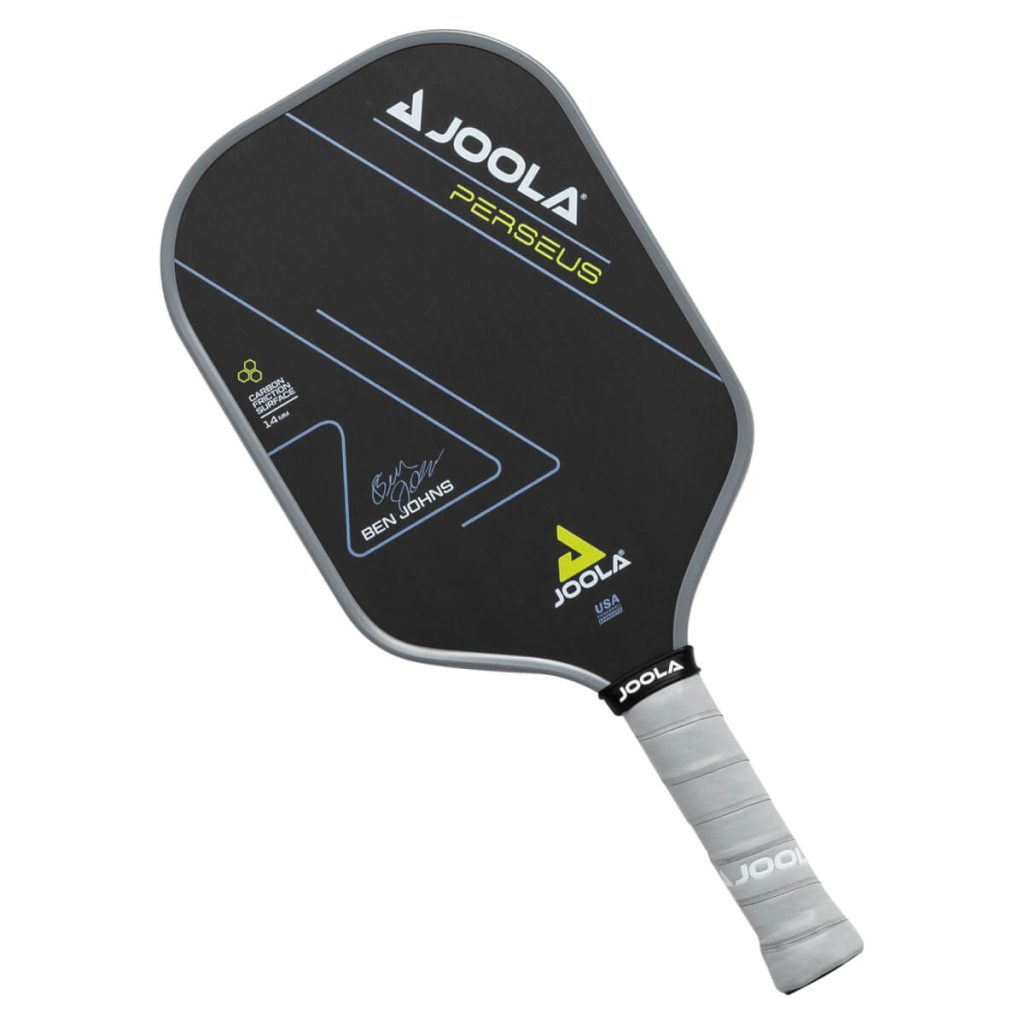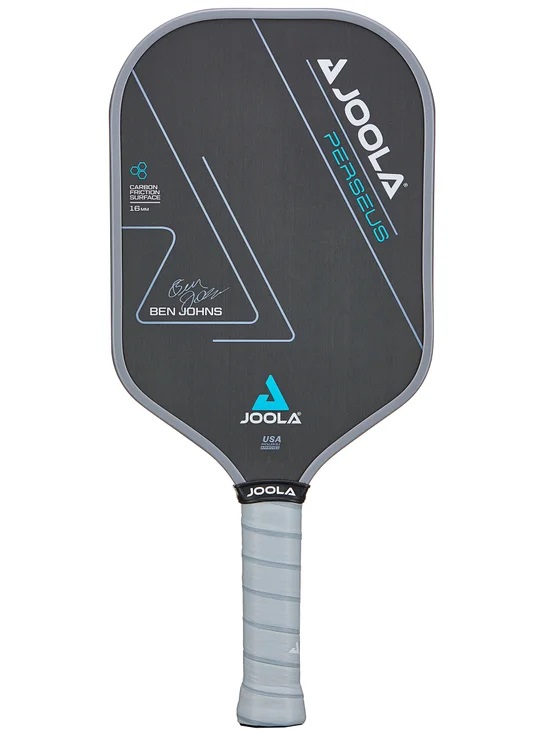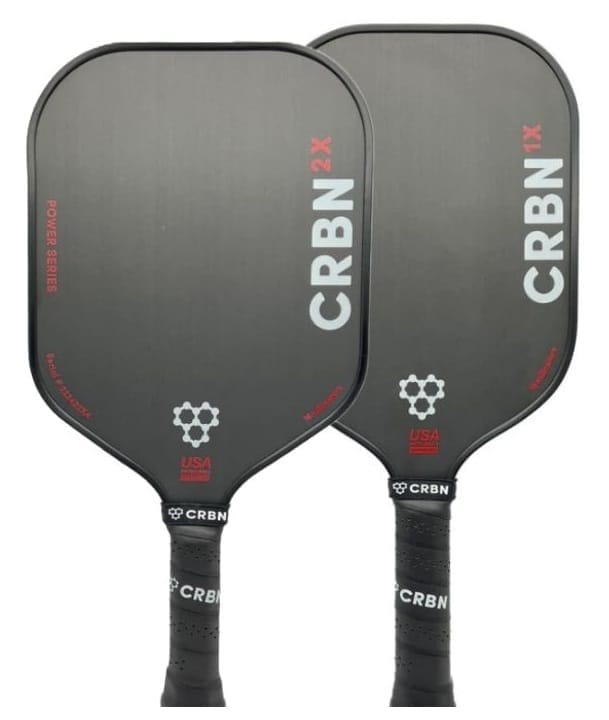Unleashing the Power of Joola Perseus Pickleball Paddle
Experience the Game-Changing Joola Perseus Pickleball Paddle
When it comes to pickleball, the right paddle can make all the difference. Enter the Joola Perseus Pickleball Paddle, a revolutionary product that has taken the pickleball world by storm. Endorsed and used by Ben John, the Joola Perseus was released on June 6, 2023, following a successful prototype phase in late 2022.
Technical Specifications of Joola Perseus
The Joola Perseus comes with a 6-month warranty for defects, ensuring that you get the best value for your money. It is a unibody thermoformed paddle, offering power, spin, and pop that can elevate your game to new heights.
JOOLA Ben Johns Perseus 14 Pickleball Paddle
The 14mm version of the Joola Perseus is priced at $249.95. It weighs 7.8 oz and features a Reactive Polymer Honeycomb core and a Charged Carbon Friction hitting surface. The grip size is 4 1/8 in, with a grip length of 5.5 in. The paddle length is 16.5 in, with a width of 7.5 in and a thickness of 14 mm. The factory grip is the JOOLA Sure Grip.
JOOLA Ben Johns Perseus 16 Pickleball Paddle
The 16mm version of the Joola Perseus is also priced at $249.95. It weighs 8 oz and shares the same core, hitting surface, grip length, paddle length, and width as the 14mm version. However, it has a grip size of 4 1/4 in and a thickness of 16 mm.
Comparing the 14mm and 16mm Versions
Both versions of the Joola Perseus have their unique strengths. The 14mm version offers slightly more pop, while the 16mm version provides more control and forgiveness. The 16mm version also has a larger grip size.

Why Choose Joola Perseus?
The Joola Perseus is seen as a replacement for the existing Solaire name/shape. It is popular for two-handed backhands and reaching into the kitchen. The paddle is elongated, measuring 16.5 inches in length, 7.5 inches in width, with a grip length of 5.5 inches. The paddles showcase a carbon friction surface that has been reinforced with charged carbon service technology, enhancing feedback and power. The paddles also include a hyper foam Edge wall, injected into the edge of the paddle to broaden the sweet spot and dampen off-center hits.
Detailed Review of Joola Perseus
The Joola Perseus is the most anticipated paddle release in the pickleball market. Its unibody thermoformed design not only enhances its durability but also reduces the risk of handle breaking issues common with the Hyperion. The paddle’s Reactive Polymer Honeycomb core and Charged Carbon Friction hitting surface work together to deliver a powerful and controlled performance on the court.
The 14mm version of the paddle is known for its pop and speed, making it ideal for players who prioritize quick hands and powerful shots. On the other hand, the 16mm version is more forgiving and offers more control, making it suitable for players who prefer touch and resets. Both versions have a generous sweet spot, thanks to the hyper foam Edge wall, which also helps dampen off-center hits.
Despite its high price point of $250, the Joola Perseus has been positively reviewed for its design, texture, control, and depth for baseline shots. Its excellent spin on serves, returns, dinks, and volleys has also been praised by players.
Comparison with Other Paddles in the Market
When compared to other paddles in the market, the Joola Perseus stands out for several reasons. Its unibody thermoformed design sets it apart from traditional paddles, offering enhanced durability and performance. The Reactive Polymer Honeycomb core and Charged Carbon Friction hitting surface are also unique to the Joola Perseus, providing a combination of power, control, and spin that is hard to find in other paddles.
While the Joola Perseus is more expensive than many other paddles in the market, its high-quality construction, innovative design, and superior performance justify the price. For players who are serious about their game and are willing to invest in a top-of-the-line paddle, the Joola Perseus is a worthy consideration.
High Price but worth it
The Joola Perseus is a power-focused paddle with all-court control capabilities. Despite its benefits, the Perseus paddle is priced at a steep $250. Nonetheless, it could be a worthy addition to your game, especially if you’re a fan of Joola or interested in playing with a paddle endorsed and used by Ben John. Now on Sale on Amazon for $199.
Reviews and Feedback
The paddle has been positively reviewed for its design, texture, generous sweet spot (particularly in the 16mm version), control, and depth for baseline shots with the 14mm paddle, and excellent spin on serves, returns, dinks, and volleys. If you’re looking to enhance your pickleball game, the Joola Perseus could be the paddle for you.








3 Comments